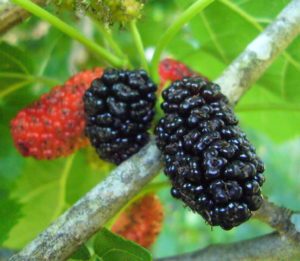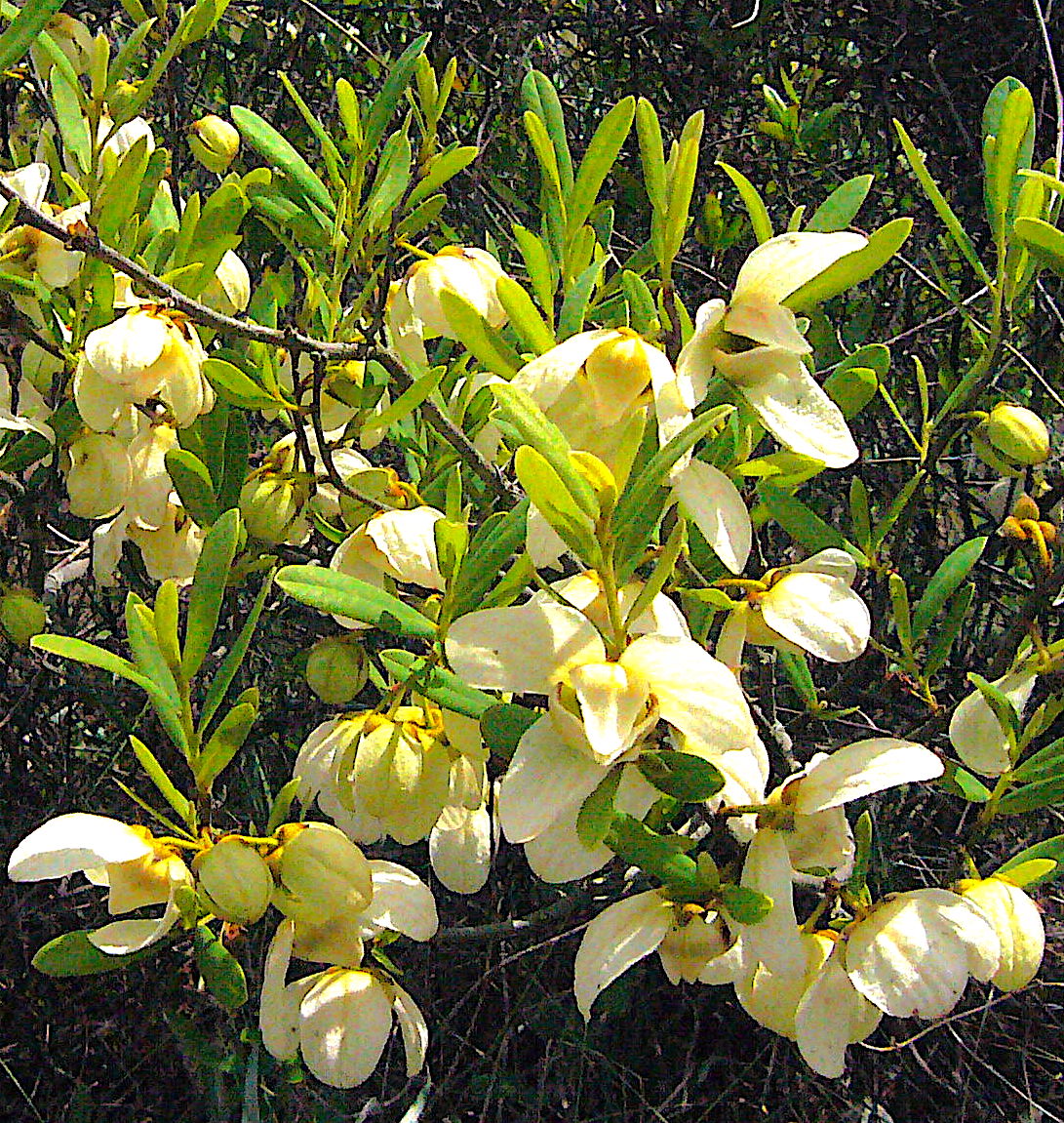
Pawpaws are blossoming. Photo by Green Deane
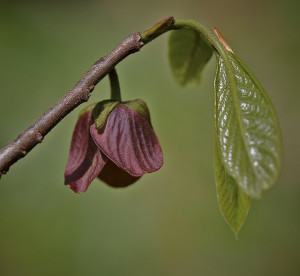
Purple paw paw
Now is the time to find pawpaws locally. While the fruit won’t be ripe for months now is the time to spy the shrubs as they are in blossoms. The shrubs are about five feet tall and have cream-colored magnolia-like blossoms. Find them in pastures and along fence lines. Livestock tend to leave them alone because the blossoms smell like carrion. We also have purple-blossom paw paws but they tend to be shorter and in palmetto scrubs. You can see my video here and read about them here.
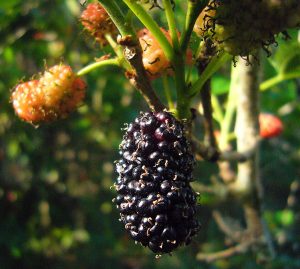
Mulberries resemble over-grown blackberries. Photo by Green Deane
Which tree has more life, the Mulberry or the Moringa? The latter will easily grow ten feet a year. But the mulberry refuses to die and they are starting to ripen now. One year I trimmed my Red Mulberry tree and used the stripped five-foot branches to prop up drooping branches on my nectarine tree. Undeterred the propping Mulberry branches took root and sprouted. So I potted them and gave them away. One still lives in a nearby town. As for the Moringa, it reseeded itself and I eventually had to coppice them to keep them in check. One odd thing about Moringa wood is that it is very fragile. You can easily break large branches by hand. My point is if you want a mulberry tree find a fruiting one and break off a branch now and stick it in the ground. It will grow.
Mulberries set fruit quickly and have a short season. From green to gone can be as short as six weeks. The fruit look like a long blackberry but sweeter (if ripe.) I know someone who tried eating young green fruit and raw leaves and said they had a mild mild-altering effect but also upset the stomach. Young leaves, however, can be cooked and eaten without mind or gastric upset. There are various species and cultivars of mulberries and they all have edible ripe fruit. However, general opinions agree that the darker the fruit when ripe the better it tastes. In many areas there are “white” mulberries which really have pink fruit. They were wildly planted to provide basic material for the silk industry (silk worms eat mulberry leaves.) Cooked silk worms are edible but do not have a pleasing taste. You can read more about Mulberries here.
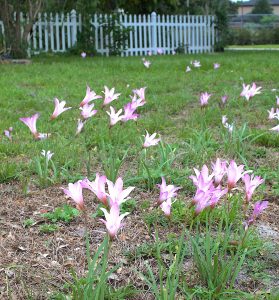
The Toxic Atamasco Lily. They can have all white blossoms as well. Photo by Green Deane
What are they? The first answer is they are NOT edible. The second is they are a threatened species. And the third answer is the toxic Atamasco lily, or Zephranthes atamasca. For a threatened species they are seen in a lot of lawns this time of year prompting many emails asking for an identification. These natives like wetlands but a well-watered lawn after seasonal rains will do nicely. The problem with the Atamasco/Rain Lily is that it resembles wild garlic before it blossoms (and even has a bulb!) However, it does not have the telltale garlic aroma. Remember if it smells like a garlic and looks like a garlic you can use it like a garlic. The Atamasco does not have any garlic aroma. It is not edible. All parts are poisonous. And while these in the picture have a pink tinge there are also all-white blossoms.

Foraging classes are held rain, shine, hot or cold. Photo by Nermina Krenata
Foraging classes: As the winter weather is easing we can schedule more foraging classes.
Saturday, March 30th, Mead Garden: 1500 S. Denning Dr., Winter Park, FL 32789. Meet at the bathrooms. 9 a.m. to noon.
Saturday, April 6th, Eagle Park Lake, 1800 Keene Road, Largo, FL 33771. Meet at the pavilion near the dog park. 9 to noon.
Sunday, April 7th, Dreher Park, 1200 Southern Blvd., West Palm Beach, 33405. meet just north of the Museum, 9 a.m. to noon.
Saturday, April 13th, Red Bug Slough 5200 S. Beneva Road, Sarasota. 9 a.m. to noon. Meet at the parking lot.
Sunday, April 14th, Bayshore Live Oak Park, Bayshore Drive. Meet at Ganyard Rd and Bayshore. 9 a.m. to noon.
Saturday, April 20th, Blanchard Park, 2451 Dean Rd, Union Park, FL 32817, meet beside the tennis courts, 9 a.m. to noon.
Sunday, April 21st, Wickham Park: 2500 Parkway Drive, Melbourne, FL, meet at the dog park. 9 a.m. to noon.
Saturday, April 27th, Mead Garden: 1500 S. Denning Dr., Winter Park, FL 32789. Meet at the bathrooms. 9 a.m. to noon.
Sunday, April 28th, Colby-Alderman Park: 1099 Massachusetts Street, Cassadaga. Fla. 32706. meet at the bathrooms, 9 a.m. to noon.
For more information on these classes, to prepay or sign up go here.
172-video USB would be a good end of spring present and is now $99. My nine-DVD set of 135 videos has been phased out. The USB videos are the same videos I have on You Tube. Some people like to have their own copy. Most of the 172 USB videos have to be copied to your computer to play. If you want to order the USB go to the DVD/USB order button on the top right of this page. That will take you to an order form.

Green Deane Forum
Want to identify a plant? The Green Dean Forum is up and running again. Have you come to dislike Facbook, then join us on the form. Perhaps you’re looking for a foraging reference? You might have a UFO, an Unidentified Flowering Object, you want identified. On the Green Deane Forum we — including Green Deane and others from around the world — chat about foraging all year. And it’s not just about warm-weather plants or just North American flora. Many nations share common weeds so there’s a lot to talk. There’s also more than weeds. The reference section has information for foraging around the world. There are also articles on food preservation, and forgotten skills from making bows to fermenting food.
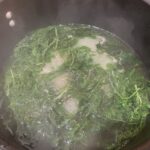
Stinging nettles boiling.
Noticed this week, was a proliferation of stinging nettles. Cooking nettles eliminates their sting plus they are high in calcium and potassium. I harvest them wearing gloves, stripping the leaves from the top of the stem to the bottom. I also rinse them as the stinging hairs can cling to sand. They take very little cooking. They are good with butter or balsamic vinegar.
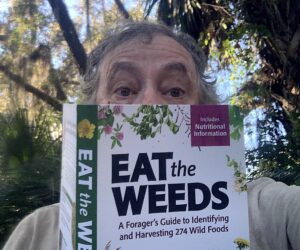
Finally, a physical copy of the book.
Now in its second printing is EatTheWeeds, the book. It has 275 plants, 367 pages, index, nutrition charts and color photos. It’s available in many locations including Amazon. Most of the entries include a nutritional profile. It can also be ordered through AdventureKeen Publishing.
This is weekly newsletter #594. If you want to subscribe to this free newsletter you can find the sign-up form in the menu at the top of the page.
To donate to the Green Deane Newsletter click here.

